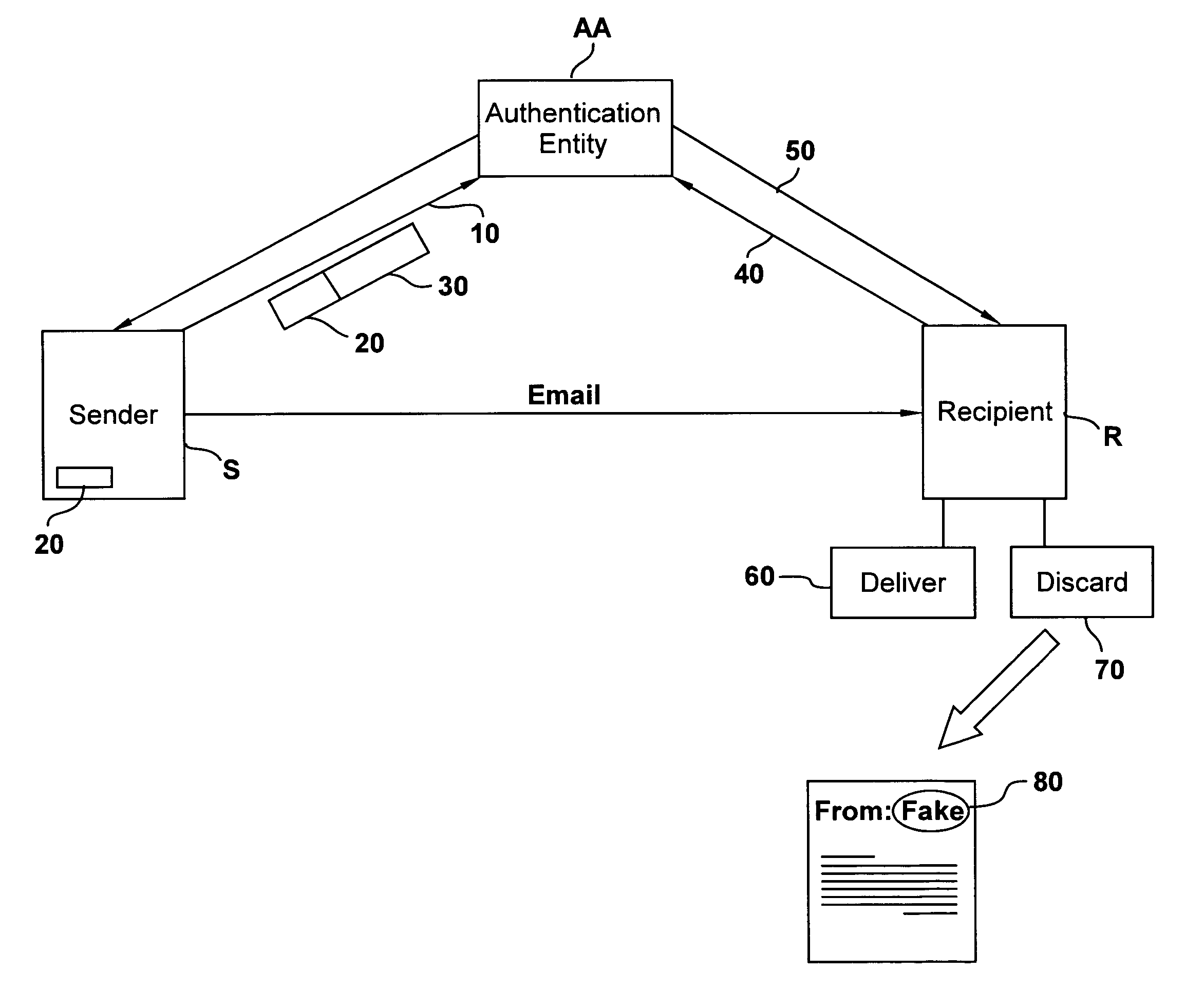Method and system for authentication of electronic communications
a technology for electronic communications and authentication, applied in the field of electronic communications, can solve the problems of increasing spam, consuming precious infrastructure resources, and wasting valuable time for readers, and consuming valuable infrastructure resources, and increasing the number of users receiving more spam
- Summary
- Abstract
- Description
- Claims
- Application Information
AI Technical Summary
Benefits of technology
Problems solved by technology
Method used
Image
Examples
Embodiment Construction
[0028] In the present disclosure, the words email, email message and electronic message are used to signify any kind of document transmitted through electronic or optical means. The “certifier”, “third party”, “authentication entity”, or “authentication authority” is used to signify a third party to a sender S or a receiver R of a communication. The third party stores information about emails sent for the purpose of authentication.
[0029] According to an embodiment of the present disclosure, shown in FIGS. 1 and 2, the sender S gets a secret authenticating code once from an authentication entity or authority AA (e.g. a third party server), sent to the sender's email address, as shown by box S1 of FIG. 1. The sender's certification software then sends an email or other message M to the authentication authority (server) every time sender S sends an email communication E to recipient R. See step S2 in FIG. 1 and arrow 10 in FIG. 2. This email or message M contains the secret code 20 (F...
PUM
 Login to View More
Login to View More Abstract
Description
Claims
Application Information
 Login to View More
Login to View More - R&D
- Intellectual Property
- Life Sciences
- Materials
- Tech Scout
- Unparalleled Data Quality
- Higher Quality Content
- 60% Fewer Hallucinations
Browse by: Latest US Patents, China's latest patents, Technical Efficacy Thesaurus, Application Domain, Technology Topic, Popular Technical Reports.
© 2025 PatSnap. All rights reserved.Legal|Privacy policy|Modern Slavery Act Transparency Statement|Sitemap|About US| Contact US: help@patsnap.com



